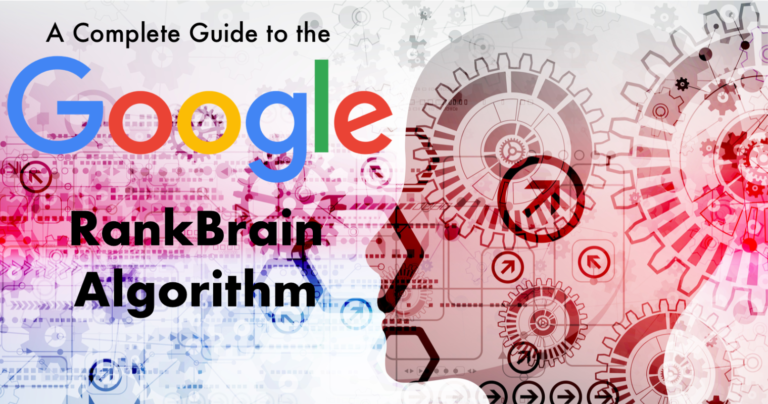Google has long prioritized user experience, whether in its core algorithmic updates, new features, products, or SERP format changes.
While some of these Google changes have involved updates to target low-quality content, links, and spam, other updates aim to understand consumer behavior and intent.
Considering the massive competition for SERP real estate from brands, even slight drops in position will have critical impacts on traffic, revenue, and conversions.
In this article, I examine a combination of some (not all) Google updates and technological advancements that significantly reflect the search engine’s focus on the human user and their experiences online – from Panda through to Page Experience.
Google Panda (2011)
First launched in February 2011, subsequent updates were continuous and added to Google’s core algorithm.
Panda was announced to target sites with low-quality content; this was one of the first signals that Google was focusing on content for the user experience.
The focus: Producing and optimizing unique and compelling content.
- Avoid thin content and focus on producing high-quality information.
- Measure quality over quantity.
- Content length is not a significant factor but needs to contain information the answers user needs.
- Avoid duplicate content – initially a big concern for ecommerce sites.
Advertisement
Continue Reading Below
*Most recently, Google’s John Mueller explained that duplicate content is not a negative ranking factor.
Google Hummingbird (2013)
Following the introduction of the Knowledge Graph came Hummingbird with a focus on semantic search.
Hummingbird was designed to better help Google understand the intent and context behind searches.
As users looked to enter queries in a more conversational manner, it became essential to optimize for user experience by focusing on content beyond the keyword with a renewed focus on the long-tail.
This was the first indication of Google using natural language processing (NLP) to identify black hat techniques and create personalized SERP results.
The focus: Creating and optimizing content that audiences want and find useful.
- Long-tail keywords and intent model strategies became crucial.
- Content creation needed to address what users are interested in and would like to learn.
- Expand keyword research to include conceptual and contextual factors.
- Avoid keyword-stuffing and producing low-quality content to personalize experiences.
E-A-T (2014)
Having gained much attention since 2018, the Google E-A-T concept first appeared in 2014 in Google’s Quality Guidelines.
Advertisement
Continue Reading Below
Now, it is part of Google’s guidelines on focusing on YMYL – your money or your life.
Marketers were advised to focus on content that could potentially impact their readers’ future happiness, health, financial stability, or safety.

Google E-A-T guidelines were established to help marketers tailor on and off-page SEO and content strategies to provide users with an experience containing the most relevant content from sources they could trust.
In other words, Expertise, Authority, and Trust.
The focus: Ensuring websites offer expert and authoritative content that can be trusted.
- Create content that shows expertise and knowledge of the subject matter.
- Focus on the credibility and authority of websites publishing content.
- Improve the overall quality of websites – structure and security.
- Earn off-page press coverage on reputable sites, reviews, testimonials, and expert authors.
Mobile Update (2015)
This was the very first time Google gave marketers a heads-up (or a warning, for many) that an update was coming.
Focusing on the user’s experience on mobile was a significant signal reflecting the growing use of mobile as part of the customer search journey.
Google was clear in communicating that this update would prioritize mobile-friendly websites on mobile SERPs. Many more mobile updates followed.
The focus: Mobile content and users’ mobile site experience.
- Focus on design factors such as responsive design and mobile page structures.
- Enhance site navigation so mobile users could quickly find what they need.
- Avoid format issues on mobile that were different from the desktop experience.
- Confirm that websites are mobile-optimized.
Advertisement
Continue Reading Below
*Just after the mobile update went live, Google quietly issued a Quality update. Websites that focused on the user experience by focusing on quality content and avoiding too much irrelevant user-generated content and too many ads did well. This was another sign that Google was putting the user experience first.
RankBrain (2015)
Like the Hummingbird principles and NLP mentioned earlier, Google RankBrain was more of a change to the algorithm.
It gave us an indication of how important machine learning was becoming in all forms of marketing and technology.
Utilizing this to learn and predict user behavior, RankBrain powered search results based on an even better understanding of users’ intent.

The focus: Ensuring that content reflects user intent and optimizing for conversational search.
- Place greater focus and emphasis on creating content that matches the user intent.
- Ensure that all aspects of technical SEO are update, (such as schema mark-up, for example).
- Google signified that RankBrain was the third-most important ranking signal.
Advertisement
Continue Reading Below
Google Mobile-First Indexing (2018)
The Mobile-First Indexing Update meant that Google would use the mobile version of a webpage for indexation and ranking.
Once again, this was aimed to help enhance the user experience and help users find what they are looking for.
Producing content for mobile and focusing on speed and performance became paramount to success.
The focus: Re-affirming the importance of mobile optimization, content, speed, and mobile site performance.
- Improve AMP and mobile page speed and performance.
- Ensure that URL structures for mobile and desktop sites meet Google requirements.
- Add structured data for both desktop and mobile versions.
- Make sure the mobile site contains the same content as the desktop site.
Google has said that March 2021 is the rollout date for its mobile-first index.
Shortly afterward, Google made mobile page speed a ranking factor so website owners would focus on load-times and page speed to enhance the user experience.
Broad Core Algorithm Updates (2018)
2018 was a year in which Google released lots of core algorithm updates covering areas such as social signals and the so-called medic update.
Advertisement
Continue Reading Below
After the August update, in particular, Google’s John Mueller suggested making content more relevant.
While there was some confusion on ranking factors and fixing specific issues, it did bring the concept of E-A-T and content for the user top of mind for many SEO professionals and content marketers.
On the topic of rater guidelines being key to the broad update, Google’s Danny Sullivan suggested:
“Want to do better with a broad change? Have great content. Yeah, the same boring answer. But if you want a better idea of what we consider great content, read our raters guidelines. That’s like almost 200 pages of things to consider.”
BERT (2019)
Following on from RankBrain, this neural network-based method for natural language processing allowed Google to better understand conversational queries.
BERT allows users to more easily find useful and accurate information.
According to Google, this represented the biggest leap forward in the past five years and one of the greatest in the history of search.
Advertisement
Continue Reading Below
The focus: Improving the understanding of consumer intent through conversational type search themes.
- Increase the depth and specifics of content.
- Work more with longtail queries and phrases using more than three words.
- Ensure that content addresses the users’ question or query and is optimized correctly.
- Focus on writing for humans clearly and concisely so that it is easy to understand.
Read more on BERT and SMITH here.
COVID-19 Pandemic: March 2020
As Google continued to focus on E-A-T signals, the global pandemic meant that consumer behavior and search patterns changed forever.
Google began to emphasize Your Money or Your Life [YMYL] signals as the internet struggled to cope with misinformation and SEO pros struggled to keep up with the rapid shifts and dips in consumer behavior.
From setting up 24-hour incident response teams with the World Health Organization and policing content to helping people find useful information and avoiding misinformation, the needs of the user never became so important.
The demand for SEO rose to an all-time high, and Google released a COVID-19 playbook.
Google Page Experience Update and Core Web Vitals (CWV)
Focusing on a site’s technical health and metrics to measure the user experience of a page metrics include looking at how quickly page content loads, how quickly a browser loading a webpage can respond to a user’s input, and how unstable the content is as it loads in the browser.
Advertisement
Continue Reading Below
The focus: Integrating new Core Web Vitals metrics to measure and improve on-page experiences.
- Mobile-friendliness, safe browsing, HTTPS, and intrusive interstitials – The Google Page Experience Signal.
- LCP – Largest Contentful Paint – improve page load times for large images and video backgrounds.
- FID – First Input Delay – ensure your browser responds quickly to a user’s first interaction with a page.
- CLS – Cumulative Layout Shift – Include the size attributes on your images and video elements or reserve the space with CSS aspect ratio boxes and ensure content is never inserted above existing content, except in response to a user interaction.
You can read more on Core Web Vitals from Google’s Martin Splitt in this post on SEJ.
Conclusion
Looking back on some of the updates and algorithmic changes from 2011 on, Google has given more and more time for people to prepare for core changes.
When announcing the page experience update in May 2020, for example, Google said:
“We recognize many site owners are rightfully placing their focus on responding to the effects of COVID-19. The ranking changes described in this post will not happen before next year, and we will provide at least six months notice before they’re rolled out.”
Warnings are also being given much more in advance (not always, though!).
Whether it is a core algorithmic update, a change to SERP layouts, a new feature, or a set of guidelines, Google’s continued focus on the consumer and behavior is relentless.
Advertisement
Continue Reading Below
SERP layout changes enhance visual and video experiences; penalties are awarded for not focusing on the end-user.
There have been many more updates from schema, carousels, and 3-packs to local and vertical-specific enhancements that paint a similar picture. I have only given you a snapshot.
Check out the full list of Google algorithm updates here.
More Resources:
Image Credits
In-post image 1: BrightEdge


